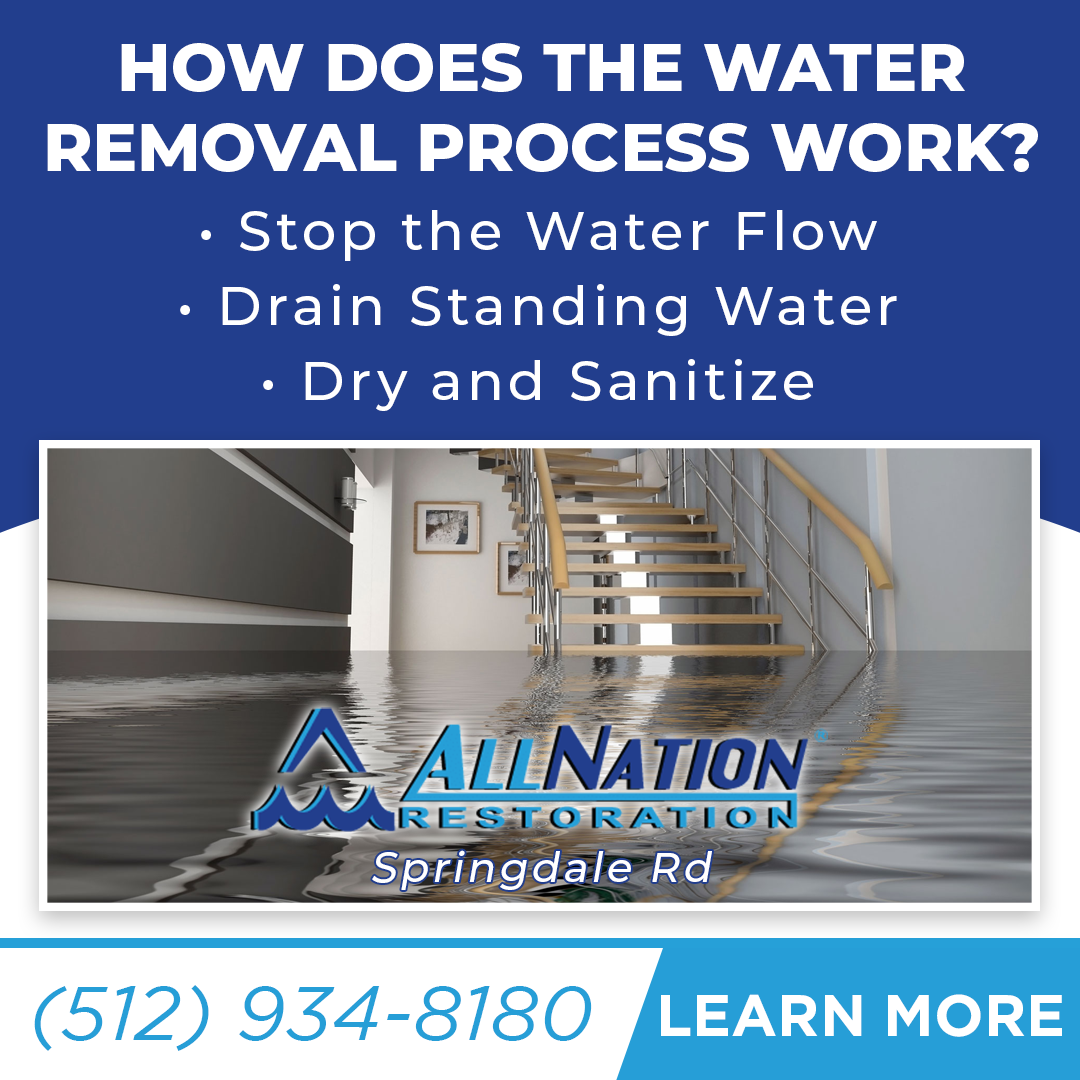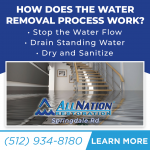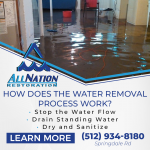Water damage is one of the leading causes of property damage in the country. Whether from backed-up sewage, leaking pipes, or a broken sink, even a relatively small amount of water can create costly repairs if left alone for too long. If homeowners experience water damage, the first call should be to a professional water removal company.

When water strikes, you need an expert. Today, the team at All Nation Restoration, Springdale Rd is here to explain how the water removal process works.
What is Water Extraction?
Water extraction is the first part of the overall water damage restoration process of extracting and removing the excess water in a house after a flood or storm. The purpose of water removal is to mitigate water damage and prevent the onset of mold and bacteria.
How Does the Water Removal Process Work?
The exact water extraction process depends on the type and scope of the damage in question. However, the typical removal process involves several key steps.
Stop the Water Flow
The first thing the technicians do is find and stop the source of water. Common sources of flooding include:
- Broken pipes
- Backed-up toilets
- Disconnected appliances
- Leaks in the roof and walls
Technicians cannot start removing water until they staunch the flow, so this investigation is the priority.
Drain Standing Water
Next, the restoration technicians drain any standing water from affected areas. They use a wet-dry vacuum to pump water into nearby drains and away from the home. They also shut off electricity to affected areas to prevent electrical hazards.
Dry and Sanitize
The last step is arguably the most important. Standing water is easily visible, but carpets, rugs, and flooring may have absorbed a lot of non-visible water. The drying process removes all excess moisture from the flooring, walls, carpets, rugs, and crawl spaces.
Technicians use high-powered fans and vacuums to remove excess water and sanitize affected areas to prevent mold and bacterial growth.
Water Mitigation vs Removal
Although they are both parts of the overall water restoration process, water mitigation and removal are separate. Mitigation serves to lessen existing damage and prevent the spread of existing damage. Techniques for water mitigation include:
- Removing damaged materials
- Removing affects drywall, carpet, flooring, etc.
- Disinfecting all affected areas
- Applying deodorizer to affected areas
- Testing humidity and moisture levels
- Inspecting homes foundation components
Call the Experts for Water Damage Restoration
If there is a small amount of water, then a person could feasibly handle removal independently. In most cases, though, you should leave water removal to the professionals. Water damage restoration companies have the knowledge and experience to accurately diagnose the severity of water damage and take steps to mitigate the spread.
Professional water damage technicians from All Nation Restoration, Springdale Rd have experience, knowledge, and specialized equipment meant specifically for removing large quantities of water. The company offers free inspections and puts their 11+ years of experience to work for homeowners who need water removal after floods, storms, or leaks.

To learn more about water removal services, contact All Nation Restoration, located on Springdale Rd online, or give the office a call at (512) 934-8180!

























